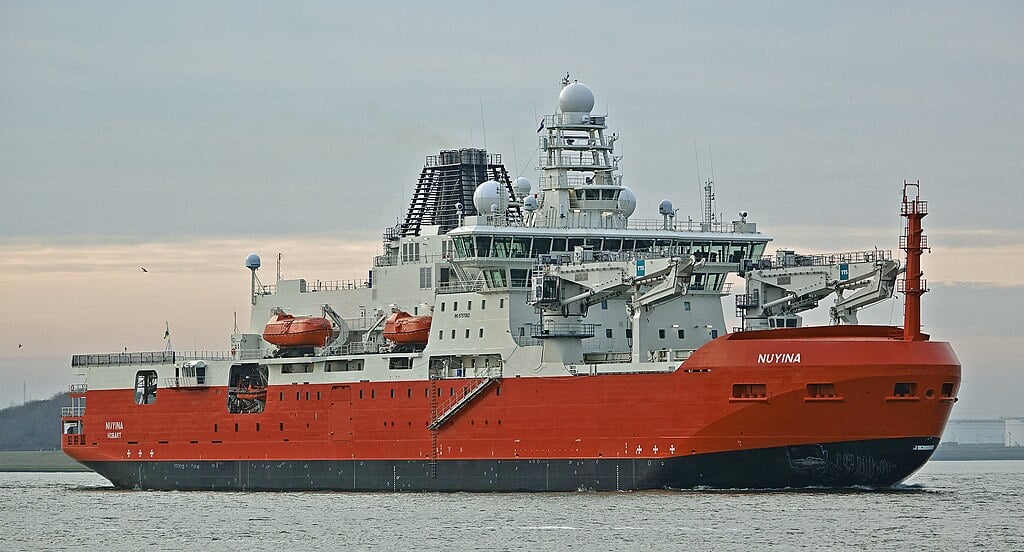

A team of scientists exploring the icy waters near Antarctica found unusual marine life creatures and rare natural sights during a 60-day research mission aboard Australia’s icebreaker ship, RSV Nuyina.
The ship, which left Hobart in early March, is carrying 60 scientists from four Australian research groups. Their main goal is to study how warmer ocean water is affecting the Denman Glacier in East Antarctica, one of the fastest-melting glaciers in the region.
Along the way, researchers are also studying rare sea life in the Southern Ocean. Some animals may be new to science.
Professor Jan Strugnell from James Cook University, who is part of a program to protect Antarctica’s environment, said the team has found a wide variety of sea animals.
That includes sea spiders as big as a human hand, sea stars the size of dinner plates, and octopuses that live only in these cold waters.
The team also found sea pigs — soft, pink creatures that crawl along the seafloor — and tiny isopods, which are small animals that live in deep-sea mud.
The ship has a special area, called a wet well, that allows scientists to collect fragile sea animals without harming them. One of these animals is a sea butterfly, a small sea snail that moves through the water like it’s flying.
Soon after it was brought aboard, the sea butterfly laid eggs in one of the ship’s tanks. It gave scientists their first chance to watch its egg development up close.
“The team is super excited about having the little creature and observing it and looking after it, so that it tells all the secrets that have been hidden until now,” said Dr. Laura Herraiz Borreguero of the CSIRO and Australian Antarctic Program Partnership.
The journey also led to rare sights above the water. On a calm day near the Shackleton Ice Shelf, scientists spotted a jade-colored iceberg. Most icebergs are white or blue, but this one shined with a green glow.
Professor Delphine Lannuzel from the University of Tasmania said the color may come from iron in the ice. The iron absorbs blue light and gives the iceberg its green tint. She added that the idea hasn’t been tested yet, but the team hopes to study it further.
Near the edge of the Denman Glacier, the team collected seawater samples to measure temperature, salt levels, oxygen, and trace metals at different depths.
Dr. Borreguero said the early findings were surprising. A strong current was found right next to the glacier’s edge. Scientists are still unsure what this means for how warm water affects the ice.
Fair winds and following seas to RSV #Nuyina and 81 on board, as Australia’s new icebreaker departs #Tasmania for its second #Antarctic voyage, to pick up helicopters from Davis station, resupply Macquarie Island and bring expeditioners home.
Video: @whitesparkpics
@sercoaspac pic.twitter.com/EujNX6zFnq— antarctica.gov.au (@AusAntarctic) February 16, 2022
The team also discovered cooler water in deeper layers and warmer water in the middle — a mix that may help explain why so little sea ice has formed this season.
“The system is changing,” Borreguero said. “For us to really understand how much heat enters the ice shelf, we need to be as close as possible to understand these processes and properties of the ocean.”
The ship is expected to remain near Antarctica for about three more weeks before returning to Hobart in early May.
